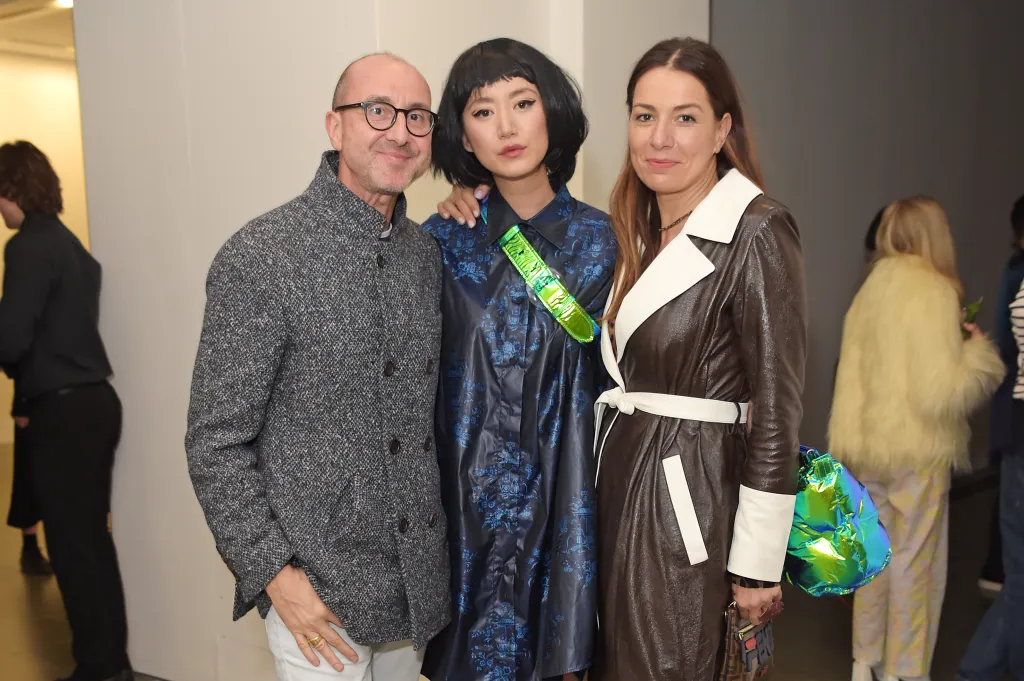The Headlines
SUPPLY… DEMAND? This fall’s art-world chatter came with a major announcement: Frieze will launch an Abu Dhabi edition in November 2026, shortly after Art Basel opens in Qatar in February 2026. Art Basel Qatar is a completely new fair, while Frieze Abu Dhabi will expand and internationalize the existing Abu Dhabi Art fair, which held its final edition last week. They join Art Dubai, founded in 2007, and Art Week Riyadh, which will hold its second edition in April 2026. On top of that, there are, of course, dozens of fairs in Europe, the US, and Asia held throughout the year. So Apollo has raised the question: are there enough collectors—and demand—for all these art fairs? “The problem is that art fairs are challenging businesses to run,” the magazine writes. “Margins are tight and it is often forgotten that the fairs’ principal clients are galleries, most of which are feeling the effect of the art-market downturn, not wealthy collectors.” Simon Fox, Frieze’s chief executive, said that “We have to deliver to [the galleries] or they will stop paying our fees. Unfortunately, fees are high because fairs are expensive to stage and costs have risen more than inflation.”
HAUTE OFF THE PRESS. Chanel has announced the public opening of Espace Gabrielle Chanel, mainland China’s first public library dedicated to contemporary art, at Shanghai’s Power Station of Art (PSA). Located on the museum’s third floor, the 18,000-square-foot library holds more than 50,000 books and audiobooks, with over 10,000 now accessible to the public. “Espace Gabrielle Chanel symbolizes Chanel’s extended commitment to accelerating the ideas that advance culture,” Yana Peel, Chanel’s president for arts, culture, and heritage, told ARTnews. “Our deepened relationship with PSA is testament to the fact that we’re not just thinking about the next quarter in our arts patronage, we’re looking to the next generation. The library embodies what is at the core of Chanel Culture Fund’s ideology; this idea of cross-cultural exchange, of honoring heritage, housing the archives of a nation, and also showcasing the best of what’s coming in the avant-garde.”
The Digest
New York City Mayor-Elect Zohran Mamdani has named the 28 members of his administration’s arts and culture transition committee, including Mellon Foundation president Elizabeth Alexander and MoMA PS1 chief curator Ruba Katrib. [ARTnews]
A Brueghel-inspired AI holiday mural, thought to have been created by YBA provocateur Mat Collishaw, has caused a stir in London, with one viewer calling it “horrible, like a scene from hell.” [Artnet News]
The Art Newspaper asks where the Labour government’s local reforms leave England’s cash-strapped museums. [The Art Newspaper]
The Dorset Museum and Art Gallery in Dorchester, UK, has launched a campaign to save a rare Netherlandish altarpiece triptych, The Master of the Sherborne Almshouse Triptych (1480–90), which is valued at £3.5 million. Its owners are preparing to sell it at auction, but the museum wants to slap an export ban on the work and raise funds to buy it so it can be publicly displayed. [Dorset Museum and Art Gallery]
The Kicker
DEEP POCKETS. Is US-style cultural giving finally taking root in the UK? London’s major museums have enjoyed a remarkably strong fall. The British Museum launched its first Met Gala–style fundraising ball, raising £2.5 million and unveiling a £10.3 million pledge from the Garfield Weston Foundation for new welcome pavilions in Bloomsbury. The Science Museum secured a record £10 million international gift from the Serum Institute of India to transform its Making the Modern World gallery. Most dramatic of all, London’s National Gallery announced that a new wing will be funded largely by two donations of £150 million each, sums that eclipse all previous UK museum gifts. These headline-making UK donations are almost entirely restricted to capital projects, while major American museums also draw income from unrestricted funds. Apollo writes that the Metropolitan Museum of Art, for example, drew on $259.7 million of donated income for operations in 2024–25, including $93.9 million released from donor restrictions. By contrast, UK museums have limited means of generating flexible income. Membership schemes remain one of the few tools available: Tate’s brought in £15.6 million last year, while the V&A’s raised £10.5 million.

